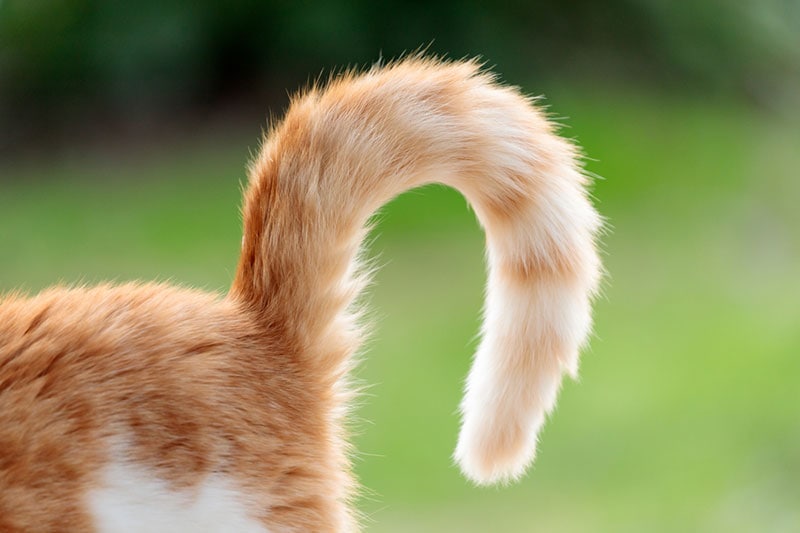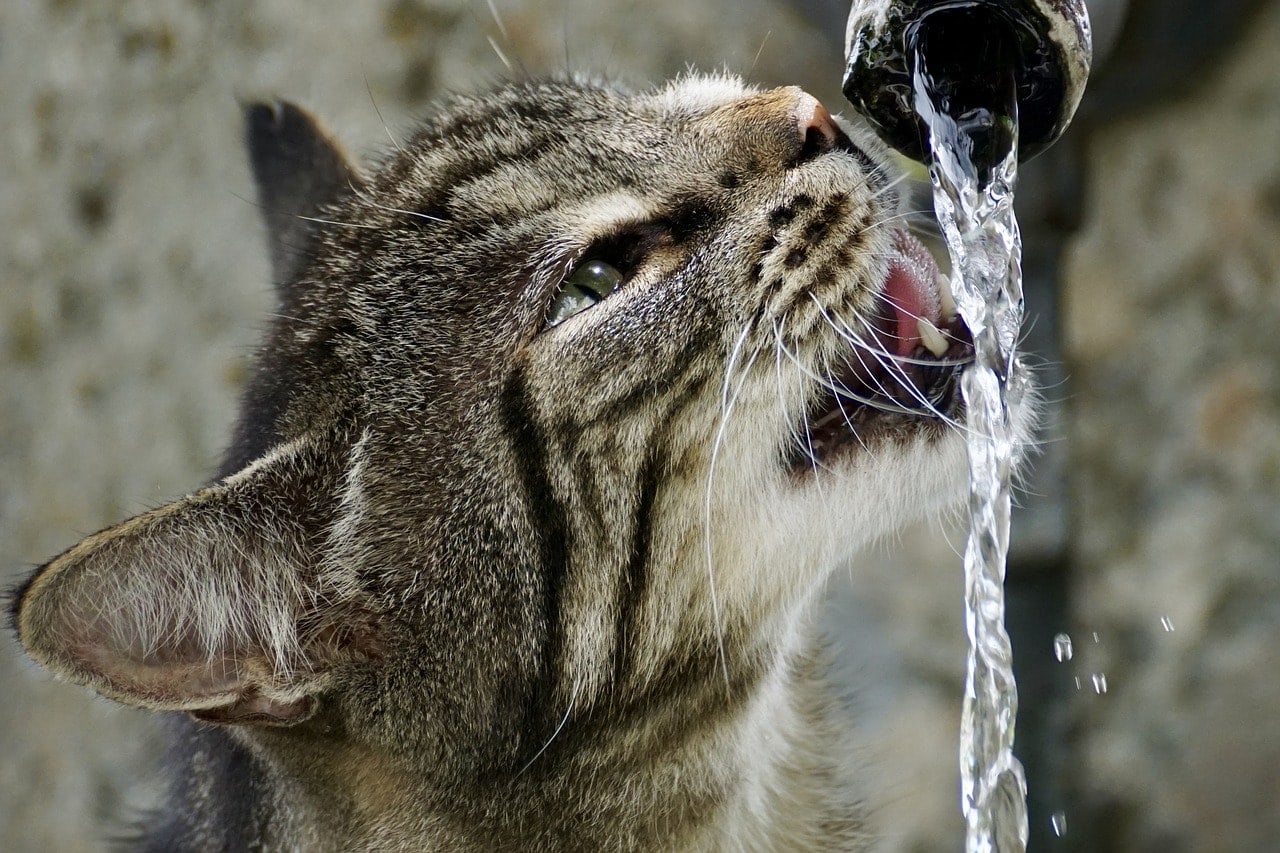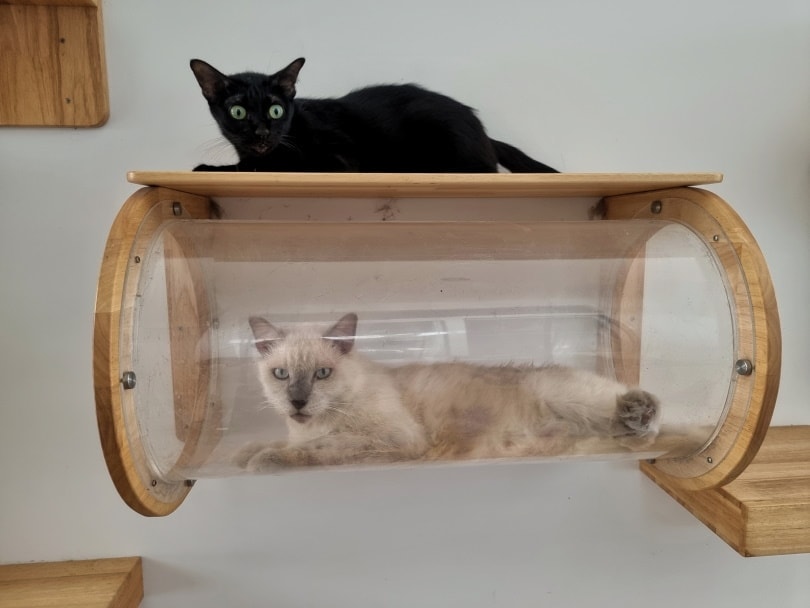Do Cats Have Bones in Their Tails? Structure, Function & FAQs
By Ed Malaker
Updated on

Cats are wonderful pets, and one of the most interesting things about them is their tails, which they use for many different things. One of the things that many people wonder about is if a cat’s tail contains any bones. The short answer is yes—in fact, it contains several! Keep reading for a discussion of the structure of a cat’s tail and what they use it for, so you can understand your pet better.
The Structure of a Cat’s Tail
A cat’s tail consists of several vertebrae, the bones of the spinal column, which extend from the cat’s backbone and form the tail, giving it strength, flexibility, and mobility. Unlike the vertebrae in the spine, the vertebrae in the tail, called caudal vertebrae, are slightly different. They gradually decrease in size from the base of the tail to the tip. The number of caudal vertebrae can vary among cat breeds and individuals, but on average, most cats have around 18–23 vertebrae in their tails. These caudal vertebrae are composed of bone material, similar to the bones in the rest of the cat’s body, though they are relatively smaller and more delicate.

The Function of a Cat’s Tail
Balance and Stability
A cat’s tail serves as an essential tool for balance and stability. When a cat jumps or climbs, their tail acts as a counterbalance, enabling them to land safely and maintain stability while moving on narrow surfaces.
Communication
Cats communicate through body language and their tails play a significant role. For example, a relaxed and loosely hanging tail signifies a calm and content cat, while an upright and bristled tail indicates aggression or fear. When the cat is hungry or wants your attention, they may wrap their tail around your leg. The position and movement of a cat’s tail can provide insight into their emotional state.
Expression of Emotions
A cat’s tail can also express their emotions. A cat with an upright tail that’s slightly curved at the tip might be curious. Conversely, a puffed-up tail can indicate fear or threat. Understanding the nuances of tail movements can help you interpret your cat’s emotions more accurately.

What About Tailless Cats?
While most cats possess tails, some breeds naturally have shorter tails or are completely tailless. These cats, such as the Manx or Bobtail breeds, have a genetic mutation that affects the development of the tail during embryonic growth. Despite the absence of a tail, these cats are not missing any essential bones or structures; their spine simply ends at an earlier point. They learn to balance without them and use other methods of communication, like being more vocal.
Frequently Asked Questions
Can a Cat’s Tail Be Injured?
Yes, a cat’s tail can be injured just like any other part of their body. Falls, accidents, or aggressive encounters with other animals can result in tail injuries. Other common causes include the tail getting stepped on or slammed in the door. If you notice that your cat’s tail is limp or swollen or if your cat shows signs of pain or discomfort, it’s essential to seek veterinary attention to assess and treat the injury.
Can I Touch or Pull a Cat’s Tail?
Most experts don’t recommend pulling or excessively touching a cat’s tail, as it can cause discomfort, pain, or injury. Cats are sensitive about their tail, and pulling or mishandling it can lead to stress, aggression, or fear. It’s best to let cats initiate contact and choose whether they want their tail touched.

How Long Is a Cat’s Tail?
The length of a cat’s tail can vary depending on the breed and individual cat. On average, it’s around 11–12 inches long.
Can a Cat’s Tail Grow Back If It’s Injured or Amputated?
No, if a cat’s tail is amputated or severely injured, it will not grow back. Unlike some other animals, cats do not possess the ability to regenerate lost tail segments or appendages.
How Should I Care for My Cat’s Tail?
Proper cat tail care involves gentle handling and avoiding unnecessary pulling or tugging. It’s also essential to monitor your cat’s tail for any signs of injury, swelling, or discomfort and seek veterinary attention if necessary.
Conclusion
A cat’s tail has plenty of small bones, called caudal vertebrae. These bones gradually decrease in size toward the tip and help the tail remain flexible. This enables the cat to balance better and communicate with their human owners and other animals. Cats’ tails are sensitive and easy to damage, and pulling on them can lead to a serious injury, possibly resulting in nerve damage.
Featured Image Credit: olivier.laurent.photos, Shutterstock











